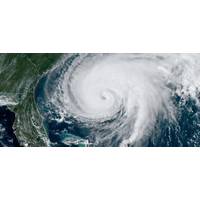
NOAA Adjusts Hurricane Season Outlook Averages
hurricane season activity using more recent storm data.Once every decade, the agency revises its set of statistics used to determine when hurricane seasons are above-, near- or below-average relative to the climate record. Beginning with this year’s hurricane season outlooks, NOAA’s Climate Prediction Center (CPC) will use 1991-2020 as the new 30-year period of record. “This update allows our meteorologists to make forecasts for the hurricane season with the most relevant climate statistics taken into consideration,” said Michael Farrar, director of NOAA’s National Centers

Forecasters Expect Busy 2020 Atlantic Hurricane Season
U.S. forecasters expect an above-normal 13-19 named storms during the 2020 Atlantic hurricane season from June 1 through November 30, the National Oceanic and Atmospheric Administration's (NOAA) Climate Prediction Center said on Thursday.NOAA forecasters estimate three to six major hurricanes packing winds of at least 111 miles per hour may form. The last two years have seen an above-average number of named storms with 18 last year and 15 in 2018. An average hurricane season produces 12 named storms, of which six become hurricanes, including three major hurricanes.The combination of several
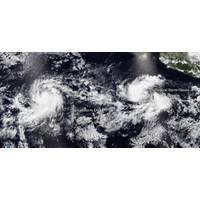
Near- or Below-normal Hurricane Season Predicted for Central Pacific
There is a 75% chance of near- or below-normal tropical cyclone activity during the Central Pacific hurricane season this year, according to NOAA’s Central Pacific Hurricane Center and NOAA’s Climate Prediction Center, divisions of the National Weather Service.The outlook also indicates a 25% chance of an above-normal season.For the season as a whole, two to six tropical cyclones are predicted for the Central Pacific hurricane region. This number includes tropical depressions, named storms and hurricanes. A near-normal season has four or five tropical cyclones.“This year we will
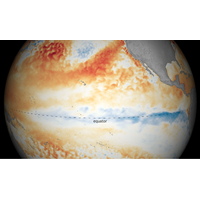
CPC: La Niña Chances at 65-75%
A U.S. government weather forecaster on Thursday said La Niña conditions are predicted to continue through the Northern Hemisphere winter 2017-18. The Climate Prediction Center (CPC), an agency of the National Weather Service, in a monthly forecast pegged the chance of La Niña developing at about 65 percent to 75 percent. The agency in its October advisory had projected a 55 percent to 65 percent chance of the phenomenon developing during the Northern Hemisphere's fall and winter. "La Niña is likely to affect temperature and precipitation across the United States
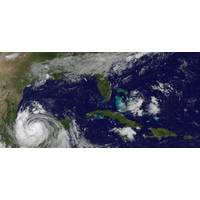
Hurricane Season to be Busier than Predicted
range of 2-4), NOAA said. The prediction for 5-9 hurricanes remains unchanged from the intial May outlook. “We’re now entering the peak of the season when the bulk of the storms usually form,” said Gerry Bell, Ph.D., lead seasonal hurricane forecaster at NOAA’s Climate Prediction Center. “The wind and air patterns in the area of the tropical Atlantic and Caribbean where many storms develop are very conducive to an above-normal season. This is in part because the chance of an El Nino forming, which tends to prevent storms from strengthening, has dropped significantly

'Above-normal' Hurricane Season Forecasted
on Thursday predicted more tropical storms in 2017 than normal for the Atlantic hurricane season, which last year brought one of the deadliest recorded storm systems that killed several hundred people. Meteorologists with the National Oceanic and Atmospheric Administration's Climate Prediction Center said there was a 70 percent chance of seeing between 11 and 17 named tropical storms this season, which begins on June 1 and runs for six months. "There is a potential for a lot of storm activity this year," Ben Friedman, acting NOAA administrator, said at a press conference
Atlantic Hurricane Season to be Stronger than Expected
in place are indicative of a more active hurricane season, such as El Niño ending, weaker vertical wind shear and weaker trade winds over the central tropical Atlantic, and a stronger west African monsoon,” said Gerry Bell, Ph.D., lead seasonal hurricane forecaster at NOAA’s Climate Prediction Center. Gerry added: “However, less conducive ocean temperature patterns in both the Atlantic and eastern subtropical North Pacific, combined with stronger wind shear and sinking motion in the atmosphere over the Caribbean Sea, are expected to prevent the season from becoming
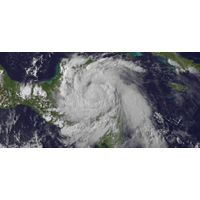
Forecasters Predict Strong Atlantic Hurricane Season
in place are indicative of a more active hurricane season, such as El Niño ending, weaker vertical wind shear and weaker trade winds over the central tropical Atlantic, and a stronger west African monsoon,” said Gerry Bell, Ph.D., lead seasonal hurricane forecaster at NOAA’s Climate Prediction Center. “However, less conducive ocean temperature patterns in both the Atlantic and eastern subtropical North Pacific, combined with stronger wind shear and sinking motion in the atmosphere over the Caribbean Sea, are expected to prevent the season from becoming extremely active.&rdquo
US Forecaster Sees High Chance of La Nina
A U.S. government weather forecaster on Thursday maintained its projections for the La Nina weather phenomenon to take place in the Northern Hemisphere later this year, as El Nino conditions dissipated. The Climate Prediction Center (CPC), an agency of the National Weather Service, said in its monthly forecast La Nina is favored to develop during the summer and pegged the chance of La Nina developing in the fall and winter 2016-17 at 75 percent. That matched the agency's expectations last month for the likelihood of La Nina. The CPC also said that El Nino conditions, a
 December 2025
December 2025





